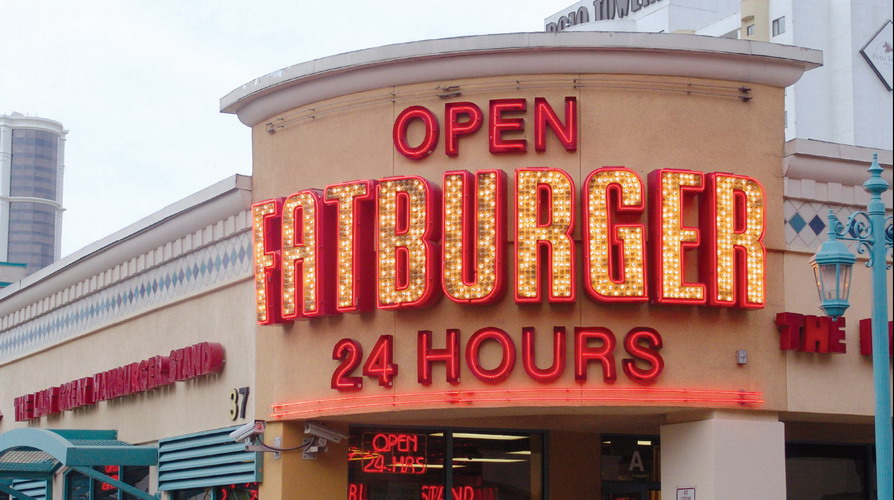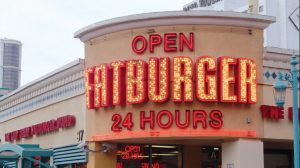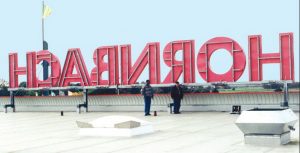Electric Signs
Channel-letter Engineering
Some aspects to consider when designing channel-letter signs
Published
15 years agoon

From my business as an expert witness/investigator, I see every way channel letters can fail, usually through improper engineering. Thus, I’ll share the most important points to consider when designing them to avoid those failures.
Historically, the channel letter was devised for “electrical” signs to avoid the blur produced by multiple, extremely bright, points of light that radiated from the lightbulbs. Without a “channel,” the light from one letter spread into the next, rendering the text almost unreadable.
To remedy this, a metallic reflector that was fitted onto the sidewalls “returned” the light into the origina¬ting letter. The next step, channel letters with a faceplate (colored acrylic), produced a uniformly lit surface.
In this column, I can only address a few of the many aspects to consider in engineering channel letters. So, I’ll focus on fundamental considerations.
For the mechanical layout, the sign’s location (besides its size and design) plays a prime role. Indoor locations are dry (which determines what electrical components to choose) and don’t incur wind or snow loads. If the channel letters won’t be mounted flush on a wall, the support structure must bear the weight of the installation itself and also, for canopy and rooftop installations, the additional shear force of a wind load.
With large, covered letters, you must consider thermal expansion of the plastic face material, which, for 10-ft.-tall (or -wide) letters, can be approximately an inch between hot summer and cold winter days. If the return can’t accommodate the expansion without placing too much force on the face, you must include some expansion joints.
If an approved structural engineer doesn’t calculate the wind load and, especially, the required strength of the supporting roof or canopy, severe damage to life and property can result. If documents that provide structural data for old buildings don’t exist, the site must be reverse engineered and inspected to give the structural engineer enough confidence to approve the sign structure. Occasionally, the building needs to be reinforced to accommodate a large sign.
For the electrical installation, wet locations bear almost the same number of problems for LEDs as for neon. With LEDs, and the direct current entailed, all electrical connections must be sealed to preclude humidity. Humidity that reaches a conductor running on DC will severely damage it (through electrolytic corrosion) quickly.
Neon in wet locations must be installed using only components (such as electrode boots, housings, etc.) that are UL listed. However, humid surfaces don’t really harm neon installations, because the AC isn’t prone to electrolytic corrosion. But all high-voltage parts must be properly spaced to avoid arcing, rather than to prevent condensation.
For small channel letters, in which the high-voltage spacing requirements of a code-compliant, high-voltage installation can’t be met, low-voltage LEDs might serve as an alternative. But, on large channel letters, neon still prevails in terms of cost effectiveness and energy efficiency. Thus, do your math correctly before choosing one system.
All electrical installations must comply with electrical regulations, or the National Electrical Code, and must be carried out professionally, in a “workmanship-like manner“ that an installer can take pride in. Always follow the component manufacturer‘s specifications and instructions, or code compliance will be lost.
Lighting calculation
Obtaining the necessary sign permits necessitates accurate light-level calculations. To obtain sign permits, many municipalities require calculations regarding a sign’s lighting impace on the neighborhood, an almost impossible task. Even a precise calculation of the total light flux from the sign and face-surface brightness is almost impossible, but here are some rough guidelines.
For this calculation, it is important to know the light source’s spectral and angular radiation characteristics, the reflection characteristic of hte inner surface of the channel letter, and the face material’s spectral-transmission parameters.
For the following two examples, we’ll refer to the same channel letter, a 1-ft.-high, circular "O," with a 2-in. stroke width and a 6-in.-deep return. The face material, Roehm GS 6H71, is 3mm thick. In one case, the letter is lit with LEDs, the other with neon.
AdvertisementFor simplicity, we’ll assume the amount of light that doesn’t hit the face material directly will be reflected only once, and the inner reflection coefficient of the white paint is assumed to be 88% of the initial intensity.
For the neon example, the neon tube emits light evenly all around its axial circumference, and the tube is mounted 3 in. deep in the 6-in.-deep channel letter.
The medium length of the tube bent into our “O” is 10 in. x Pi = 31.45 in., and, at a 25mA operating current (a 30mA transformer), a rare-earth green in a 15mm-diameter tube will give approximately 600 lumen/meter (according to the data sheet of the tube manufacturer), which equals 478 lumens for the given tube length. According to the example, 36.8° of the tube circumference will shine directly on the back of the face material, that is, approximately 10%, or 47.8 lm without loss. The remaining 90% (which equals 430 lm) are reflected on the sidewall (only one reflection is assumed), with a reflection coefficient of 88%; thus, it will yield 379 lm on the face back, totaling the light-flux incident on the face back to be 426 lm at a peak wavelength of 530nm.
For the LED example, we’ll use modules with two Nichia NFSB036G LEDs per module and assume a module distance of 4 in. into our letter. That will yield eight modules on the O’s circumference, so 16 LEDs with 3-lm output (at 100mA) for each LED.
That will give a total light flux from the LEDs to be 16 x 3 = 48 lm at 529 to 539nm (which is very similar to the neon color chosen). Now, from measurements, we can assume the angular light radiation from the LED module at the channel-letter back will fit almost a Lambertian radiator. Thus, the angle of light that arrives without reflection on the returns on the back of the face is 20.6°, which equals 5.7% of the total light flux, yielding a direct flux contribution of 5.7% x 48 lm = 2.75 lm.
The remaining 45.25 lm will be reflected once with a reflected inten¬sity of 88%, resulting in 39.82 lumens of reflected contribution; thus, the total incident flux on the face back is 39.82 + 2.75 = 42.57 lm.
AdvertisementFor the face material, we’ll use the “TruLED” GS6H71, which has a transmission of roughly 20% (!) at our peak wavelength.
In our neon example, from the 379 lumens shining on the back of the face, only 0.2 x 379 = 75.9 lm will leave through the front.
In our LED example, 42.5 x 0.2 = 8.5 lm will be the total flux from the letter.
To measure the letter surface, our O has an outer diameter of 12 in., and an inner diameter of 10 in. Thus, the radiating surface is approximately 222 sq. cm or 0.0222 sq. meters. The flux density (which is equal to brightness) for the neon is 75.9 lumen/ 0.0222 sq. meter = 3,405 lm/sq. meter (we would use lux if this were incident light), but we have a, emitting radiator, so we must use the unit cd/sq. meter, which is roughly the equivalent numeric value).
For the LEDs, we obtain 8.5 lm/0.0222 sq. meter = 381 lm/sq. meter. The 300 cd/sq. meter is approximately the brightness of a standard LCD computer screen. So, our LED-lit sign will be seen only in darkness, while the neon emits roughly 10-fold brightness and will be seen even during the day.
I’ve simplified the calculations by eliminating other parameters, but the results show the complexity of lighting calculations and the huge difference in sign visibility when the actual light-flux parameters are considered.
Oh, yes, inside the channel letters, the light must be well reflected to minimize light loss. In one case I investigated, the client complained about the “dark, unevenly lit sign.” Having opened a channel letter, I found it was painted flat, dark grey, almost black, inside. Not a happy return for the signshop.

SPONSORED VIDEO
Introducing the Sign Industry Podcast
The Sign Industry Podcast is a platform for every sign person out there — from the old-timers who bent neon and hand-lettered boats to those venturing into new technologies — we want to get their stories out for everyone to hear. Come join us and listen to stories, learn tricks or techniques, and get insights of what’s to come. We are the world’s second oldest profession. The folks who started the world’s oldest profession needed a sign.
You may like

American Sign Museum Names New Executive Director

3 Things Print Pros Must Do to Build Stronger Relationships in the Interiors Market

Graphics Turn an Eyesore Cooler Into a Showpiece Promo in Historic Plaza
Subscribe

Bulletins
Get the most important news and business ideas from Signs of the Times magazine's news bulletin.
Most Popular
-

 Tip Sheet1 week ago
Tip Sheet1 week agoAlways Brand Yourself and Wear Fewer Hats — Two of April’s Sign Tips
-

 Photo Gallery2 days ago
Photo Gallery2 days ago30 Snapshots of the 2024 ISA Sign Expo
-

 Ask Signs of the Times3 days ago
Ask Signs of the Times3 days agoWhy Are Signs from Canva so Overloaded and Similar?
-

 Real Deal1 week ago
Real Deal1 week agoA Woman Sign Company Owner Confronts a Sexist Wholesaler
-

 Benchmarks6 days ago
Benchmarks6 days ago6 Sports Venue Signs Deserving a Standing Ovation
-

 Editor's Note2 weeks ago
Editor's Note2 weeks agoWhy We Still Need the Women in Signs Award
-

 Women in Signs1 week ago
Women in Signs1 week ago2024 Women in Signs: Megan Bradley
-

 Photo Gallery1 week ago
Photo Gallery1 week ago21 Larry Albright Plasma Globes, Crackle Tubes and More














